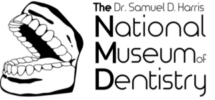Dental modifications are meant to be seen. As a result, the focus of practice has almost always been contained to the front teeth, the incisors and canines, as they are the most visible when opening the mouth when talking, eating, or smiling. These teeth were also the most accessible and easiest to manipulate by the practitioners, whether self-modified or modified by a skilled and practiced member of the culture. These modifications were and still can be practiced without the aid of the technology and medicine available today. Hand or bow drills along with sharpened stones or metal were the common tools of trade for the more permanent alterations, and although some medicinal herbs like coco leaves could relatively numb the area being worked on, pain was an ever present part of the experience.

Malaysian examples of tooth decoration. Image from “Fashion in Deformity” by William Henry Fowler, M.D., F.R.S., 1880.
Types of Traditional Modifications
There are four main classifications of traditional dental modifications:
- The removal of teeth, which includes evulsion, ablation, and exarticulation.
- The filing of teeth, most commonly associated with sharpening the teeth into points or specific designs.
- The drilling and ornamentation of teeth, known as inlaying, which typically involves drilling partially into a tooth and cementing an object, like a gem, into the cavity.
- The staining of teeth, which often includes using native flowers and herbs to color teeth and even the gums.




